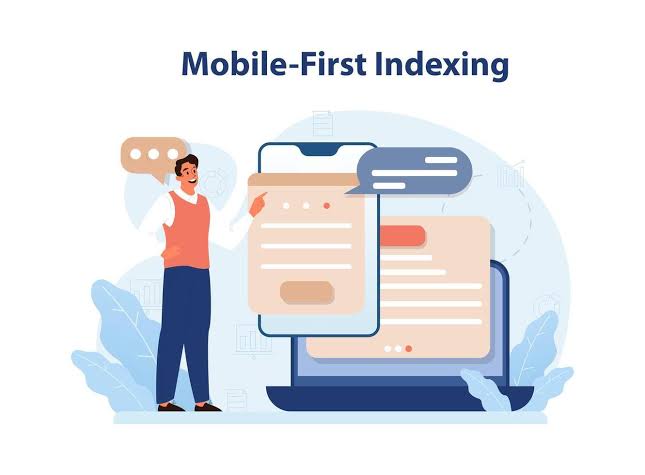
SEO In 2025: The Power Of Mobile-First Indexing For Your Website’s Growth
Unlock the power of Mobile-First Indexing to boost your website’s SEO. Learn why mobile optimisation and Google’s mobile-friendly ranking matter in 2025.
Table of Contents
- The SEO Secret You Need: Mastering Mobile-First Indexing for Better Rankings
- What is Mobile-First Indexing?
- Why Google’s Mobile-First Approach is Crucial for Your Site
- How Mobile-First Indexing Impacts SEO
- Steps to Adapt Your Website for Mobile-First Indexing
- Conclusion: Don’t Let Your Website Fall Behind
The SEO Secret You Need: Mastering Mobile-First Indexing For Better Rankings

As we move further into 2025, businesses must embrace the changing digital landscape. One of the most significant changes is Mobile-First Indexing. This shift means that Google now predominantly uses the mobile version of your website for ranking and indexing purposes. If you haven’t adapted to this yet, your site could be losing valuable SEO opportunities. In this blog, we’ll explore why Mobile-First Indexing matters and how you can optimise your website for this crucial change.
What Is Mobile-First Indexing?
Google’s Mobile-First Indexing means that Googlebot, the crawler that indexes websites, now primarily uses the mobile version of your website when determining rankings. Previously, Google considered the desktop version of a site as the primary source for indexing. However, as mobile internet usage has skyrocketed, Google has shifted to focus on the mobile experience.
In simpler terms, if your website isn’t optimised for mobile, you risk a decrease in search engine rankings. With a majority of users browsing on mobile devices, Google wants to ensure that mobile-friendly websites are given priority in search results.
Why Google’s Mobile-First Approach Is Crucial For Your Site
Google’s new Mobile-First Indexing is more than just a passing trend; it’s a critical shift towards providing a better user experience. As more users access websites via smartphones and tablets, Google has recognised the need for websites to cater to mobile devices. If your site is not mobile-friendly, Google will penalise it in its rankings. This can lead to a significant loss of organic traffic, reduced visibility, and a diminished online presence.
In addition to SEO benefits, mobile optimisation provides an enhanced user experience. When users visit a site that isn’t mobile-friendly, they often leave immediately, resulting in higher bounce rates. Google tracks these metrics, so a poor mobile experience can hurt your ranking and drive potential customers away.
How Mobile-First Indexing Impacts SEO
The impact of Mobile-First Indexing on SEO cannot be overstated. Now, Google ranks your website based on how well your mobile version performs rather than your desktop version. This means that you need to ensure that your mobile website is as fully optimised as your desktop site.
Mobile SEO Is More Than Just Responsiveness
Mobile SEO goes beyond just having a responsive design; it also includes page speed, usability, and content accessibility on smaller screens. If your mobile website is slow to load, difficult to navigate, or lacks important content, Google will rank it lower than mobile-friendly competitors.
Google’s Mobile-First Indexing And Ranking Signals
With Mobile-First Indexing, Google will look at key ranking signals such as:
- Mobile page speed
- Mobile usability (text readability, navigation ease, etc.)
- Mobile site content (e.g., media, images, and text)
Failure to provide a seamless mobile experience will directly impact your SEO and could hurt your rankings in Google search results.
Steps To Adapt Your Website For Mobile-First Indexing
Adapting your website to meet the requirements of Mobile-First Indexing isn’t just about changing a few things on the surface. It requires a comprehensive strategy to ensure your website works well on mobile devices.
1. Prioritise Mobile-Responsive Design
First and foremost, make sure your website design is responsive. A responsive website adapts its layout to fit different screen sizes, providing an optimal user experience on both desktop and mobile devices. Google values responsive design because it ensures that all users, regardless of the device they use, can interact with your site easily.
2. Optimise Mobile Page Speed
Google uses page speed as a ranking factor, especially for Mobile-First Indexing. Slow-loading websites can drive users away and affect your SEO rankings. Use tools like Google PageSpeed Insights to analyse your website’s mobile speed and make necessary adjustments. Compress images, leverage browser caching, and minimise code to speed up load times.
3. Create Mobile-Friendly Content
Ensure that the content on your mobile website is easy to read and accessible. Text should be legible without zooming in, buttons should be easy to click, and forms should be simple to fill out on mobile devices. Google takes into account the usability of your content when determining rankings.
4. Check for Mobile Errors
Perform regular audits to detect and resolve mobile errors, such as broken links, unresponsive images, and incorrect redirects. These issues can negatively affect your site’s ranking in mobile search results. Use Google Search Console to monitor and fix mobile usability issues.
Conclusion: Don’t Let Your Website Fall Behind
The era of Mobile-First Indexing is here, and it’s essential that your website is ready for the change. Google’s shift to Mobile-First Indexing is a reflection of the increasing importance of mobile devices in the digital landscape. A mobile-friendly website is not just an SEO necessity; it’s a requirement for providing a top-notch user experience.
Don’t wait until it’s too late—start optimising your website for Mobile-First Indexing today! Ensure your mobile pages are fast, user-friendly, and properly structured to meet Google’s evolving ranking criteria. The future of SEO is mobile, and adapting to Mobile-First Indexing will help you stay ahead of the competition and maintain a strong online presence.





